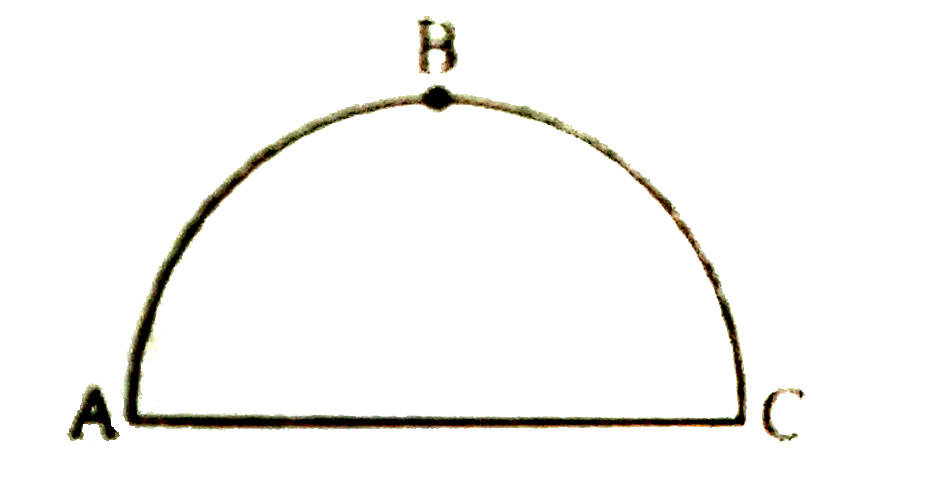If a particle of mass m start from along curved circular path shown in figure with constant tangential acceleration a, then net force at B on the particle has the magnitude :

zero
The correct Answer is:C
Topper's Solved these Questions
- TEST PAPERSBook:BANSALChapter:TEST PAPERSExercise:PHYSICS PART (A)
Explore 32 Videos
- TEST PAPERSBook:BANSALChapter:TEST PAPERSExercise:PHYSICS PART (B)
Explore 3 Videos
- TEST PAPERSBook:BANSALChapter:TEST PAPERSExercise:PHYSICS PART- C
Explore 4 Videos
- SEMICONDUCTORSBook:BANSALChapter:SEMICONDUCTORSExercise:CBSE Question
Explore 32 Videos
Similar Questions
A particle of mass 10 g moves along a circle of radius 64 cm with a constant tangential acceleration. What is the magnitude of this acceleration if the kinetic energy of the particle becomes equal to 8×10−4J by the end of the second revolution after the beginning of the motion ?
View SolutionA Particle of mass 'M' moves in a uniform circular path of radius 'r' with a constant speed 'v' then its centripetal acceleration is .
View Solution
Knowledge Check
If a particle starts from a along the curved circular path shown in figure with tangential acceleration 'a'. Then acceleration at B in magnitude is :
 A2a√1+π2Ba√1+π2Ca√π2−1Daπ√1+π2
A2a√1+π2Ba√1+π2Ca√π2−1Daπ√1+π2A particle of mass 2kg start motion form rest on a circular path of radius r=4m with constant tangential acceleration 4ms−2. Find the net work done on the particle in initial 1 second.
A16JB25JC30JD6JA particle of mass m starts from rest and moves in a circular path of radius R with a uniform angular acceleration α The kinetic energy of the particle after n revolutions is
AnαmR2B2πnαmR2C12mnαR2Dmnαr2
For a particle moving along a circular path with a constant speed, the accelerationis constant in
View SolutionA particle starts moving along a circle of radius (20/π)m with constant tangential acceleration. If the velocity of the parthcle is 50m/s at the end of the second revolution after motion has began, the tangential acceleration in m/s2 is :
View SolutionA particle moves along a circle of radius r with constant tangential acceleration. If the velocity of the particle is v at the end of second revolution, after the revolution has started, then the tangential acceleration is
View SolutionA particle moves along a circle of radius r with constant tangential acceleration. If the velocity of the particle is v at the end of second revolution, after the revolution has started, then the tangential acceleration is
View SolutionA particle moves along a circle if radius (20/π) m with constant tangential acceleration. If the velocity of the particle is 80m/s at the end of the second revolution after motion has begun the tangential acceleration is .
View Solution